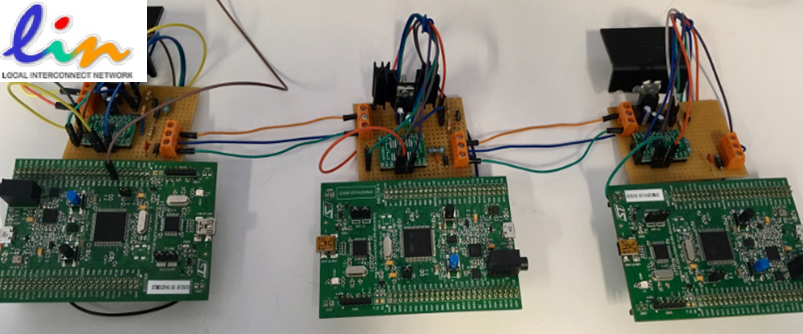The communication among a high number of electronic devices creates several troubles. The most common being: latency, data errors and high development cost. This lead to the creation of device networks, which objective is to link many devices using as few conductors as possible. This new network should fulfill some requirements such as; efficiency, low cost, and robustness. The need of satisfying such requirements gave place to the construction of the bus of communication. Generally, the automotive industry uses CAN (Controller Area Network), LIN (Local Interconnected network) and FlexRay buses to connect their devices. Each of them are used for a specific application inside of the automobile. The efficient performance of this buses has allowed different industries to incorporate them to their systems. Nowadays CAN and LIN are used in domotic systems, medical equipment, automatization factories, navy electronic, industrial machines control, among others. Moreover, many projects are development in the B105 Electronic Systems Lab where it is necessary to link different actuators and sensors because of this, it has been decided to implement a LIN network.
The Project was composed of a master node and two slaves nodes that interact with each other. The discovery kit STM32F411E DISCO was used to implement the master and the slave node. Finally, the other devices the discovery kit STM32F411E DISCO possess like the diodes led (actuators) and the accelerometers (sensors) were used for the working demonstration.

